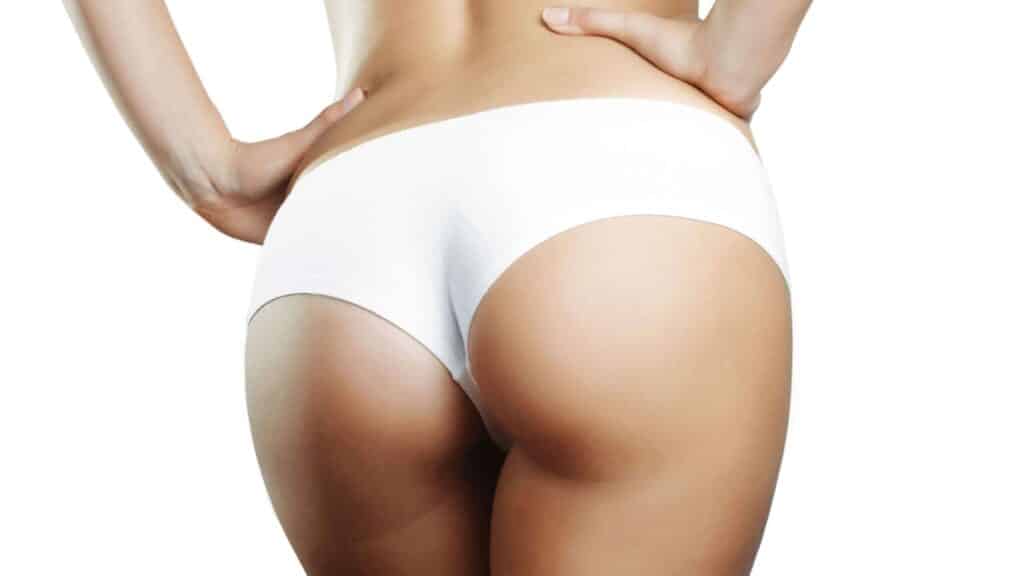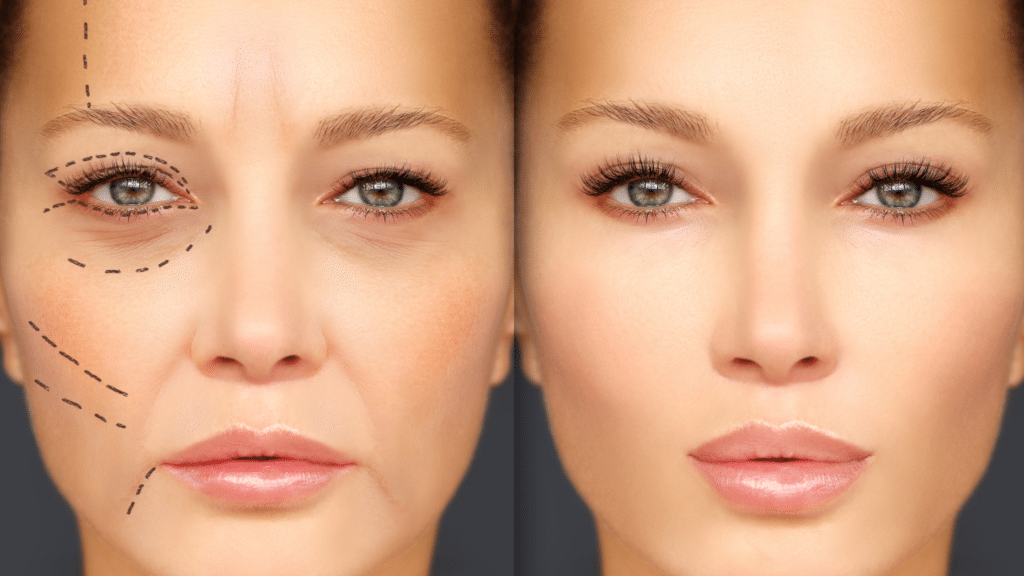Defining the Brazilian Butt Lift
Fat Transfer
The Brazilian Butt Lift (BBL), a cosmetic procedure highlighted in the Aesthetic Surgery Journal, stands out as it reshapes and enhances the buttocks’ appearance, often involving changes like silicone use and reduction of the midsection. It does so without the need for synthetic implants. This method, a technique in cosmetic surgery, relies on a person’s own fat, making it a more natural option than silicone for those seeking enhancement under the guidance of cosmetic surgeons.
It involves cosmetic surgery, specifically cuts made by cosmetic surgeons, removing fat from other areas of the body, such as the abdomen, hips, or thighs, to make aesthetic changes. This process, performed by a cosmetic surgeon, not only collects the necessary fat for transfer but also contours these donor sites, providing a dual benefit of cuts and changes, especially in the buttock area.
Dual Benefits
One of the most appealing aspects of BBL, as performed by a cosmetic surgeon, is its ability to offer both buttock augmentation and body contouring in one procedure, utilizing fat tissue from the back or another area. By transferring fat to the buttocks, a cosmetic surgeon increases volume at the top and improves shape at the back for women. At the same time, the cosmetic surgeon slims down areas at the top and back where excess fat was removed, as per the doctor’s expertise.
This dual action makes BBL a comprehensive solution. It not only enhances the size and shape of the buttocks but also refines the overall silhouette of the body, including the back, for women, bringing it to the top form. Women patients appreciate this two-fold advantage, often highlighting their satisfaction with both their fuller buttocks and more contoured donor areas.
BBL Versus Traditional Lifts
Fat Transfer
The Brazilian Butt Lift (BBL) revolutionizes buttock enhancement for women by using the patient’s own fat. This method contrasts sharply with traditional lifts, which might involve implants or excision techniques, for women. The BBL’s fat transfer techniques ensure a more natural look and feel for women, as they repurpose body fat from other areas.
Women patients often prefer the BBL for its ability to sculpt and enhance the buttocks without introducing foreign materials. This approach not only minimizes the risk of rejection but also improves overall body contour for women.
Recovery Time
Recovery from a BBL usually involves less discomfort compared to traditional butt lifts for women. Since the procedure is less invasive, patients can typically resume normal activities quicker. The key is avoiding direct pressure on the buttocks for about two weeks to ensure optimal fat graft survival.
Traditional lifts, especially those involving implants, may require a longer recovery period. Patients need to manage both the healing of incisions and the adjustment to implants.
Risk Factors
Both procedures have their risks, but the task force guidelines for safe BBL practices have significantly lowered complications. Traditional lifts carry risks associated with anesthesia, infection, and implant-related issues such as displacement or capsular contracture.
Conversely, BBL risks include fat embolism or uneven absorption of the transferred fat. However, choosing a skilled surgeon familiar with pressure management during recovery can mitigate these risks.
Motivations Behind Choosing BBL
Improved Proportions
People often seek Brazilian Butt Lifts to enhance their body’s proportion. It’s not just about adding volume; it’s about sculpting the body to create a more balanced look. They find that clothes fit better, and their silhouette becomes more appealing.
This procedure uniquely addresses areas of flatness or asymmetry that might not respond to exercise. For many, it’s a way to achieve the shape they’ve always wanted but couldn’t attain through diet and exercise alone.
Boosted Confidence
Another significant factor is the boost in self-confidence. Seeing the desired changes can profoundly affect how individuals feel about themselves. This emotional uplift is a key motivator for choosing BBL over other types of lifts.
The personalized nature of BBL plays a big role here. Surgeons work closely with patients to understand their aesthetic goals, ensuring results that truly reflect each person’s vision for their body.
Customized Results
BBL stands out because it offers tailored outcomes. Every procedure is designed around the patient’s specific needs and desires, making it possible to correct issues like asymmetry in a way that feels natural and satisfying.
This level of customization means that results are not one-size-fits-all but are instead as unique as the individuals receiving them. It’s this promise of achieving one’s ideal form that draws people towards BBL despite its costs or the mentioned mortality rate associated with less experienced surgeons.
Ideal Candidates for BBL
Health Status
Good physical health is paramount for those considering a Brazilian Butt Lift. Individuals must be free from chronic medical conditions that could impair healing or increase surgical risks.
They should also have realistic expectations about the procedure’s outcomes. Understanding the limits of what BBL can achieve ensures satisfaction with the results.
Smoking Habits
Non-smoking status significantly impacts one’s candidacy. Smokers face higher complication rates and longer healing times due to impaired blood flow. Thus, quitting smoking several weeks before and after the surgery is crucial.
Fat Availability
Having sufficient fat for harvesting is essential. The procedure involves transferring fat from other parts of the body to the buttocks. Common areas include the midsection, hips, and thighs.
Candidates need enough excess fat in these areas to create a natural-looking enhancement.
Weight Stability
A stable weight before undergoing BBL is crucial for lasting results. Significant weight fluctuations can affect the size and shape of transferred fat cells, potentially compromising the surgery’s success.
BBL Procedure Explained
Anesthesia Choice
The Brazilian Butt Lift (BBL) starts with choosing the right anesthesia. This ensures comfort throughout the procedure. Options typically include general anesthesia or sedation.
Patients discuss this with their surgeon beforehand. The choice often depends on health, preference, and the extent of fat transfer.
Fat Harvesting
Next is the fat harvesting phase. Surgeons use liposuction to collect fat from other body parts. Common areas include the abdomen, hips, and thighs.
This step requires precision. It’s vital for collecting high-quality fat cells that will survive in their new location.
Purification Process
After harvesting, the fat undergoes purification. Only the best quality fat cells are chosen for transfer.
This process involves spinning the harvested fat at high speeds. It separates usable cells from debris and fluid. This step is crucial for a successful outcome.
Injection Technique
Finally, surgeons carefully inject the purified fat into the buttocks. They use special techniques to ensure a smooth, natural-looking result.
The injection sites and amounts vary by patient. The goal is always to enhance shape while ensuring symmetry and proportionality.
Outpatient Nature
Most BBL procedures are outpatient. They usually last between two to four hours.
Patients can go home the same day with assistance. Recovery instructions are provided to ensure optimal results.
Recovery After BBL Surgery
Initial Rest
The recovery period begins immediately after the operation. Patients often experience discomfort and swelling in the buttock area. Doctors recommend resting for at least two weeks. During this time, lying on your stomach or side is crucial to avoid pressure on the butt.
Patients should avoid sitting directly on their backs. This helps in preserving the results of the aesthetic surgery. Pain management is also a key aspect of this phase.

Post-Op Care
Wearing a compression garment is essential during recovery. It reduces swelling and supports the healing process. These garments are typically worn for up to eight weeks post-surgery.
Avoiding sitting on the buttocks for about two to six weeks is recommended. For times when sitting is unavoidable, using a donut pillow or a similar device prevents pressure on the area.
Managing Side Effects
Swelling and discomfort are common after undergoing a Brazilian Butt Lift. Following doctors’ instructions closely aids in managing these side effects effectively.
Pain can be controlled with medication prescribed by your surgeon. It’s important to stay hydrated and maintain a healthy diet to support recovery.
Understanding BBL Complications
Infection Risks
Infections are a serious concern after a Brazilian Butt Lift. They can occur when bacteria enter the surgical sites. Symptoms like fever, redness, and unusual discharge signal an infection.
Patients must follow post-operative care instructions closely to avoid this. Choosing a qualified surgeon also significantly reduces the risk.
Fat Transfer Issues
Fat transfer complications can include asymmetry or lumpiness in the treated areas. Sometimes, the body may absorb the transferred fat unevenly, leading to unsatisfactory results.
It’s crucial for patients to discuss their expectations with their surgeon beforehand. This ensures a mutual understanding of realistic outcomes.
Immediate Attention Signs
e signs demand immediate medical attention after a BBL. These include severe pain not relieved by medication, shortness of breath, and chest pain.
Such symptoms could indicate more severe complications like fat embolism. Patients experiencing these should contact their healthcare provider without delay.
Choosing Your BBL Surgeon
Certification Importance
Board-certified cosmetic surgeons bring a higher level of expertise to Brazilian Butt Lift (BBL) procedures. They have undergone rigorous training and examinations, ensuring they’re well-versed in the latest techniques and safety standards.
Choosing a surgeon with a strong background in cosmetic surgery, especially in BBL, minimizes risks associated with the procedure. It’s crucial to verify their certification as a step towards ensuring your safety and achieving desired outcomes.
Consultation Advice
Before settling on a surgeon, it’s wise to consult with multiple doctors. This allows you to compare their approaches, experience levels, and patient satisfaction rates.
During consultations, ask for before-and-after photos of previous BBL surgeries. These images can provide insight into the surgeon’s ability to meet your aesthetic goals. Discussing your expectations and any concerns about potential risks is essential. A good surgeon will be transparent about what the procedure entails, including the use of general or local anesthesia and how they plan to minimize complications.
Discussing Risks
Given the complexities highlighted in “Understanding BBL Complications,” discussing potential risks with your chosen surgeon is vital. An experienced cosmetic surgeon will not only discuss these risks but also outline steps taken during surgery to mitigate them.
They should explain how their specific technique—whether involving liposuction or particular cuts—helps reduce complications. Understanding their approach provides peace of mind and sets realistic expectations for the procedure’s outcome.
Summary
The Brazilian Butt Lift (BBL) stands out as a transformative option for enhancing your body’s contours. By comparing BBL to traditional lifts, understanding motivations, identifying ideal candidates, and explaining the procedure, recovery, complications, and the importance of choosing the right surgeon, we’ve covered the essentials you need to know. This knowledge empowers you to make informed decisions about your body and health. Remember, the journey to achieving your desired aesthetic begins with selecting a skilled surgeon who prioritizes safety and results. Trust is key in this partnership towards enhancing your figure.
Ready to take the next step? It’s crucial to consult with a certified surgeon who thoroughly understands the nuances of BBL surgery. They can provide personalized advice tailored to your body and goals. Your dream silhouette is within reach—take action today by scheduling a consultation with a trusted professional. Let your transformation journey begin.
Frequently Asked Questions
What is a Brazilian Butt Lift?
A Brazilian Butt Lift (BBL) is a cosmetic procedure that enhances the size and shape of the buttocks using fat transfer from other parts of the body.
How does BBL differ from traditional butt lifts?
Unlike traditional lifts, BBL uses your own fat for augmentation, offering a more natural look and feel while also contouring the donor areas.
Who are ideal candidates for a BBL?
Ideal candidates are those in good health, with realistic expectations, and have sufficient fat in other body parts for transfer.
Can you explain the BBL procedure?
The BBL procedure involves liposuction to remove fat from specific areas, which is then purified and injected into the buttocks to enhance their shape and size.
What should I expect during recovery from BBL surgery?
Expect some discomfort, swelling, and bruising. Avoid sitting directly on your buttocks for about two weeks to ensure optimal results.
Are there any complications associated with BBL?
Yes, like any surgery, BBL has risks including infection, asymmetry, and complications related to fat transfer. Choosing an experienced surgeon can minimize these risks.
How do I choose a surgeon for my BBL?
Look for a board-certified plastic surgeon with extensive experience in performing BBLs. Check before-and-after photos of their work and read patient reviews to ensure credibility and expertise.











